Truro gets its name from the old Cornish word ‘tri-veru’, meaning three rivers, which also appears in 13th-century documents as try-weru, trywru and tryurw. The rivers in question are the Kenwyn, Allen and a little stream under Tregolls Road. The Kenwyn passes alongside Lemon Quay. The river was covered over for car-parking in the 1920s and 30s. This area is now an Italian-style piazza.
Prints and text about famous men from Truro.
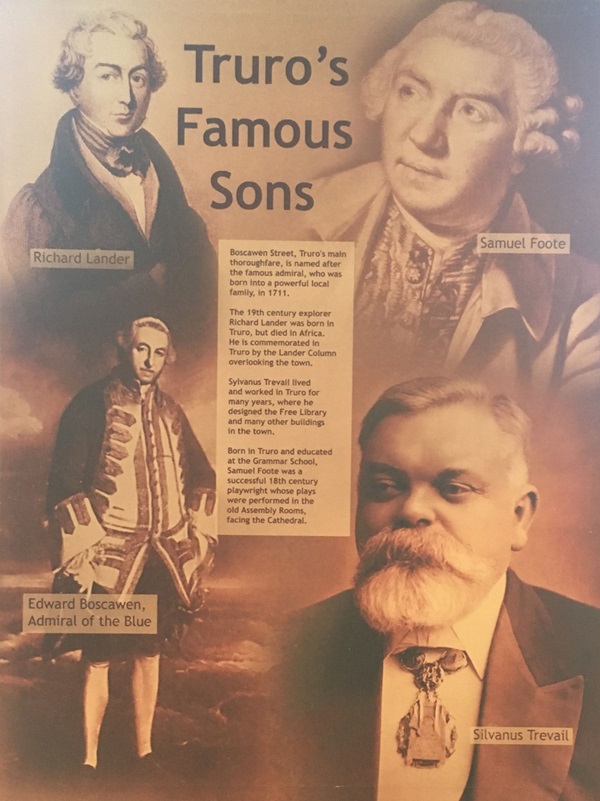
The text reads: Boscawen Street, Truro’s main thoroughfare, is named after the famous admiral, who was born into a powerful local family, in 1711.
The 19th century explorer Richard Lander was born in Truro, but died in Africa. He is commemorated in Truro by the Lander Column overlooking the town.
Sylvanus Trevali lived and worked in Truro for many years, where he designed the Free Library and many other buildings in the town.
Born in Truro and educated at the Grammar School, Samuel Foote was a successful 18th century playwright whose plays were performed in the old Assembly Rooms, facing the cathedral.
Text about the history of Truro.
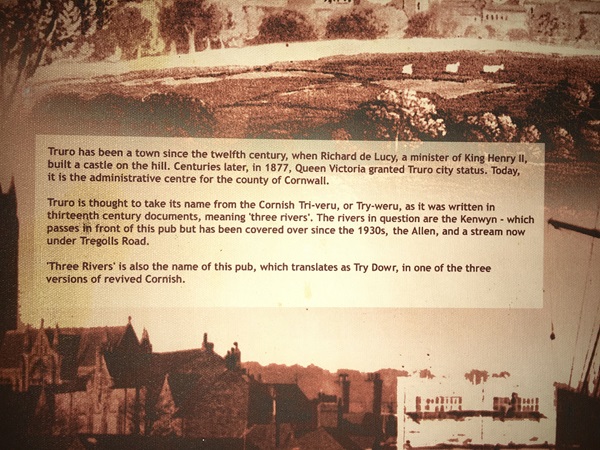
The text reads: Truro has been a town since the 12th century, when Richard de Lucy, a minister of King Henry II, built a castle on the hill. Centuries later, Queen Victoria granted Truro city status. Today, it is the administrative centre for the county of Cornwall.
Truro is thought to take its name from the Cornish ‘tri-veru’, or ‘try-weru’, as it was written in 13th century documents, meaning three rivers. The rivers in question are the Kenwyn – which passes in front of this pub but has been covered over since the 1930s – the Allen, and a stream now under Tregolls Road.
Three Rivers is also the name of this pub, which translate as Try Dowr, in one of the three versions of revived Cornish.
Photographs and text about Lemon Quay.
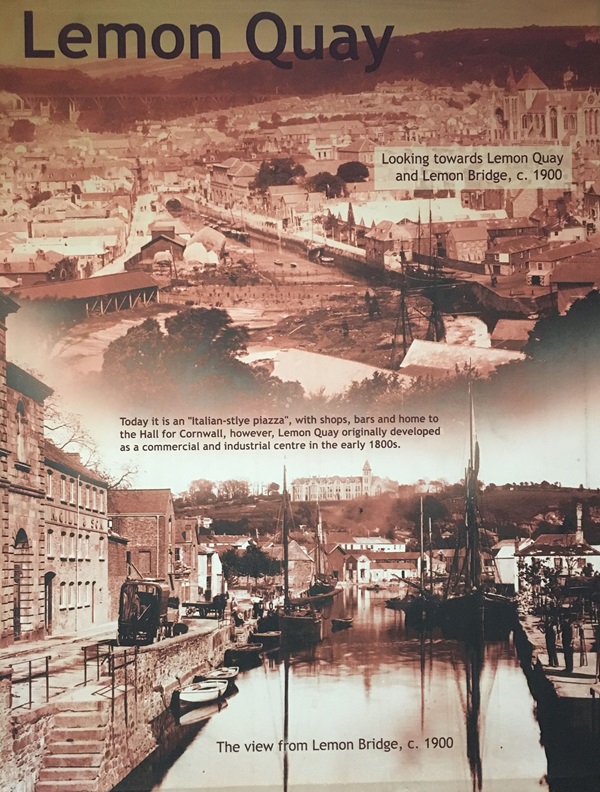
The text reads: Today it is an Italian-style piazza, with shops, bars and home to the Hall for Cornwall. However, Lemon Quay originally developed as a commercial and industrial centre in the early 1800s.
Photographs of industrial workers in Truro.
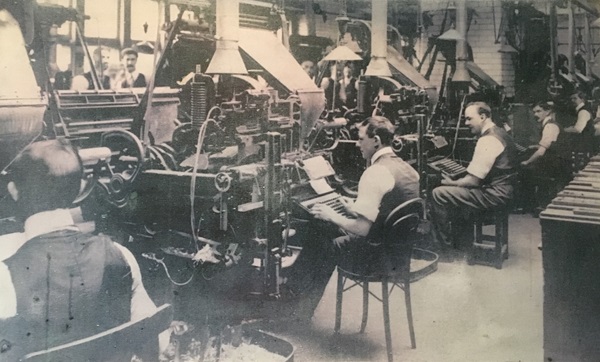
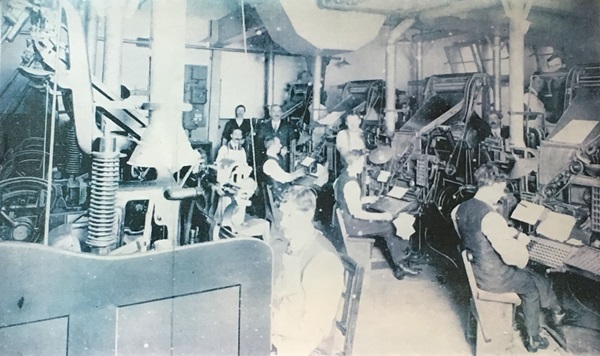
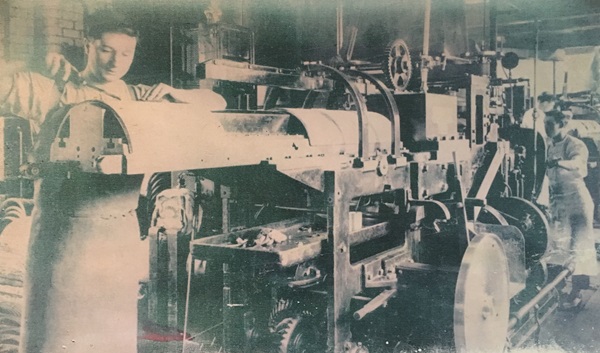
External photograph of the building – main entrance.
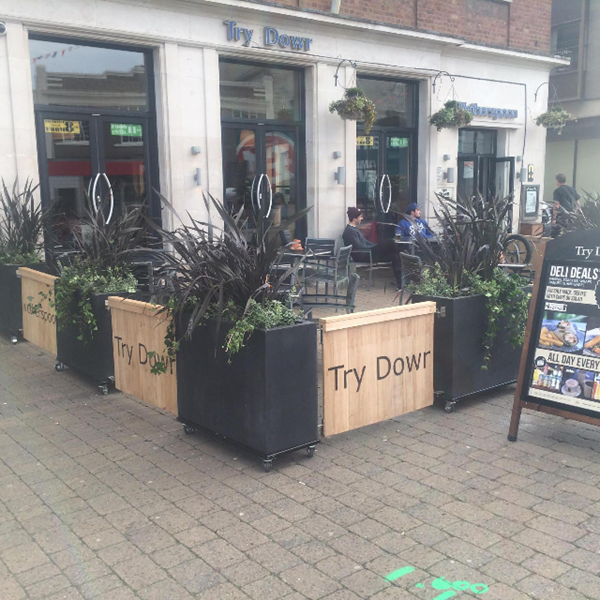
If you have information on the history of this pub, then we’d like you to share it with us. Please e-mail all information to: pubhistories@jdwetherspoon.co.uk